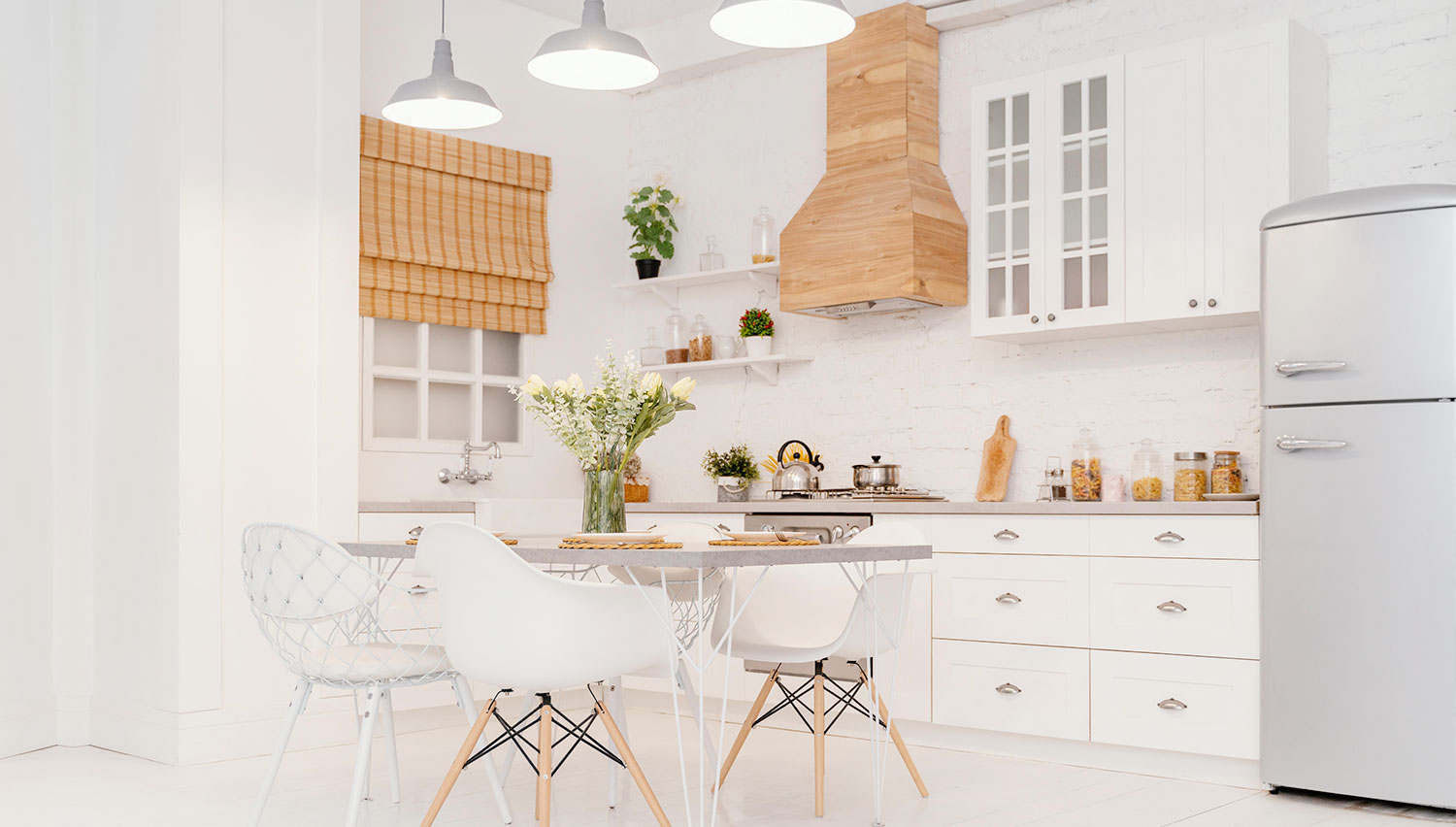
Tips for an Eco-friendly Modular kitchen
With a growing desire to be more environmentally conscious, it’s only a matter of time before people start living a sustainable lifestyle rather than just talking about it. Fortunately, there are numerous methods to incorporate sustainable design into your house, particularly the kitchen, so you can begin doing your part to help the environment.
Consider these easy areas where your choices make a major difference in terms of long-term sustainability if you’re planning a kitchen redesign or update.
Use Eco-friendly materials to build the kitchen
Green choices can be made for anything from flooring to Backsplashes that follow the newest design trends while also helping you make a difference. Consider wood that are harvested ethically, salvaged wood floors found in historic homes or structures, or linoleum manufactured from natural resources for your flooring including linseed oil, which boasts anti-microbial properties. Environmentally friendly materials include cork, rubber, and concrete.
Support brands who create their collections using renewable energy and recyclable materials, or pick intrinsically sustainable materials like bamboo for central islands and counters. Materials like cork, repurposed clay tile, or recovered wood tiles may work well as backspalshes.
For countertops quartz and corian are regarded to be more environmentally friendly than granite. Quartz and Corian manufacture has a lower environmental impact than granite mining. When you consider how low-maintenance quartz and Corian are, as well as the fact that they don’t require harmful sealants and will last a lifetime without cracking or chipping, they’re the long-term solution for your countertops.
Use materials that don’t use VOC
VOCs (volatile organic compounds) are a class of carbon-based substances that evaporate quickly at ambient temperature. VOCs are released by a variety of typical household materials and items, including paint, flooring, and furnishings. Adhesives and resins contain formaldehyde, a recognized human carcinogen, making them hazardous to your health and the environment.
Paint the walls and cabinetry in your kitchen with low or zero VOC paints to keep it healthy. Low-VOC flooring options include cork, linoleum, salvaged hardwood, and bamboo. Choose eco-friendly tiles, such as recycled glass, for your backsplashes.
Consider refacing the cabinets
Kitchen cabinet refacing will nearly always produce the same look as custom cabinetry. Furthermore, refacing consumes less wood than a single tree. Your existing cabinets will have stronger, more durable boxes as a consequence of the strengthening process. You’ll also save money because refaced cabinets are less than half the price of new bespoke cabinets.
Refacing cabinets is an eco-friendly design solution if your kitchen layout is more-or-less the same. However, this is not a road for everyone. You’ll need to decide whether refacing is a practical option for you. If you have any questions, speak with your design consultant so that you may make the best decision possible.
Consider LED Lights
LED lights are energy-efficient and eco-friendly lighting options for your kitchen. In comparison to incandescent, fluorescent, or compact fluorescent bulbs, they are 90% more efficient.
LED lights, on the other hand, often have a longer lifespan than any other light source. As a result, you save money on both electricity and non-biodegradable garbage.
Choose recycled materials
From recycled items that go into quartz slabs to recycled glass that goes into glass tiles, there are many ways to decorate your kitchen using materials made with recycled “ingredients.” Consider using recycled materials in your decor. Refurbish and repurpose materials whenever possible—you’ll make a gorgeous design piece while also helping to save the environment!
Consider repurposing what you currently have when selecting new materials for your kitchen. Make floating shelves using excess wood from flooring or countertops. Alternatively, on your new cabinets, utilize cabinet handles from a dresser. Refurbishing and repurposing goods whenever possible allows you to create a beautiful kitchen while also preventing items from ending up in landfills!
Use energy efficient kitchen appliances
Other wonderful ways to lessen your environmental impact while sprucing up your new kitchen include energy-efficient dishwashers, ovens, range-hoods, microwaves, and refrigerators. It’s also a good idea to double-check their functionalities and settings to make sure you’re getting the most out of them.
Induction cooktop: By sending heat directly to the pan, this style of burner minimizes cooking time and energy consumption. Installing an induction cooktop in your kitchen will limit the amount of heat that is discharged into the space, allowing you to keep your kitchen cooler.
Convection Oven: You’ll use roughly 20% less energy using a convection oven than you would with a regular oven.
Dishwasher: This appliance is much energy-efficient than your washing machines. Choose an Energy Star-qualified dishwasher for improved energy efficiency, but also seek for models that have gained Tier II designation from the Consortium of Energy Efficiency, which all Monogram models have.
Include some Greens
Moving on to a little more decorative concept, incorporate plants to your Modular kitchen will not only improve the design but also make it more sustainable and environmentally beneficial. Houseplants not only purify the air, but they also aid in the removal of contaminants from your house and the environment. Furthermore, cultivating your own herbs, for example, would provide a long-term source of components for various recipes while also ensuring that they are fully organic and environmentally friendly.
To design an Eco-friendly Modular kitchen get in touch with one of the best Modular kitchen in Salem– LeFreddo
